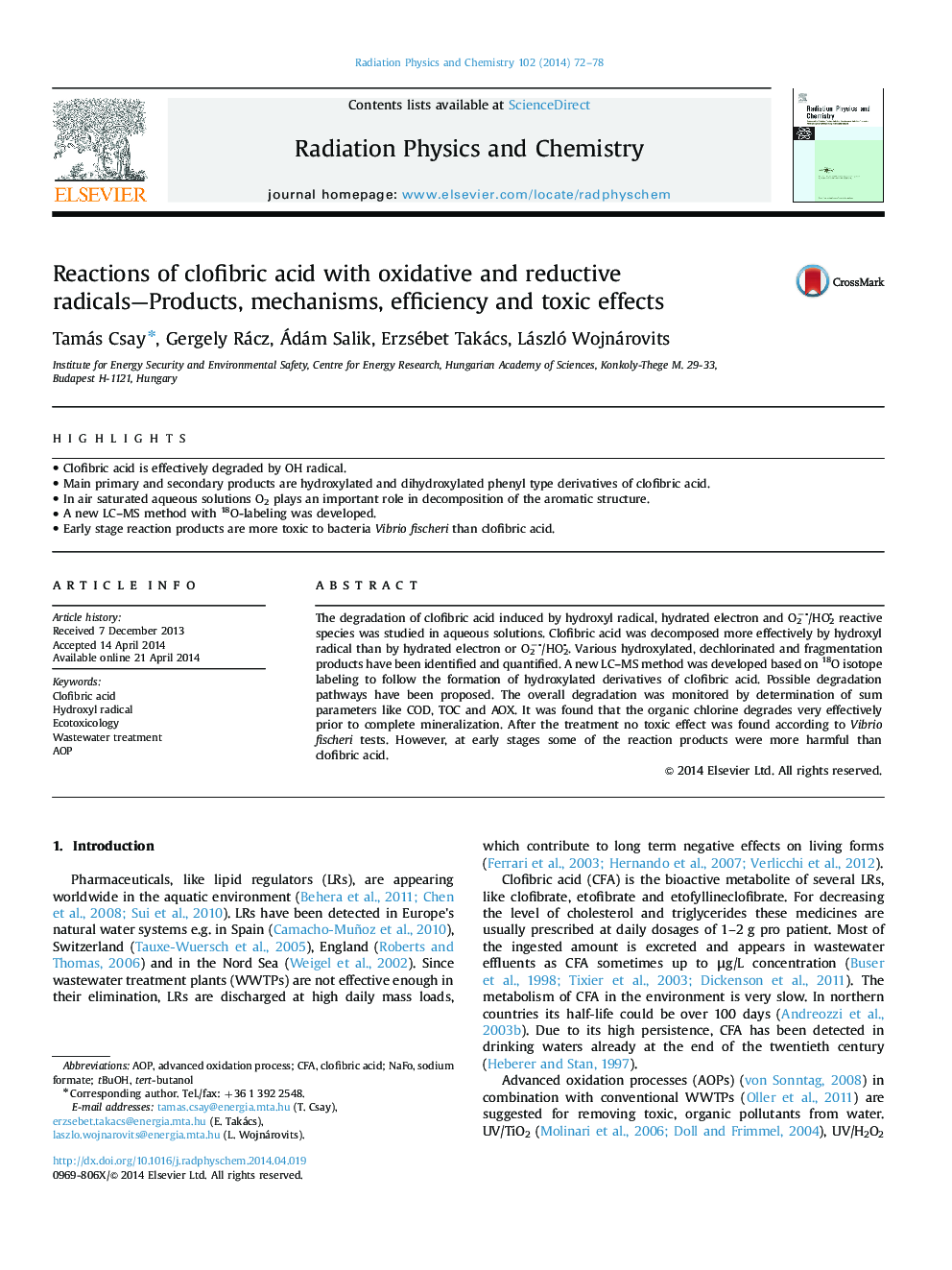| کد مقاله | کد نشریه | سال انتشار | مقاله انگلیسی | نسخه تمام متن |
|---|---|---|---|---|
| 1891279 | 1533522 | 2014 | 7 صفحه PDF | دانلود رایگان |
• Clofibric acid is effectively degraded by OH radical.
• Main primary and secondary products are hydroxylated and dihydroxylated phenyl type derivatives of clofibric acid.
• In air saturated aqueous solutions O2 plays an important role in decomposition of the aromatic structure.
• A new LC–MS method with 18O-labeling was developed.
• Early stage reaction products are more toxic to bacteria Vibrio fischeri than clofibric acid.
The degradation of clofibric acid induced by hydroxyl radical, hydrated electron and O2−∙/HO2∙ reactive species was studied in aqueous solutions. Clofibric acid was decomposed more effectively by hydroxyl radical than by hydrated electron or O2−∙/HO2∙. Various hydroxylated, dechlorinated and fragmentation products have been identified and quantified. A new LC–MS method was developed based on 18O isotope labeling to follow the formation of hydroxylated derivatives of clofibric acid. Possible degradation pathways have been proposed. The overall degradation was monitored by determination of sum parameters like COD, TOC and AOX. It was found that the organic chlorine degrades very effectively prior to complete mineralization. After the treatment no toxic effect was found according to Vibrio fischeri tests. However, at early stages some of the reaction products were more harmful than clofibric acid.
Journal: Radiation Physics and Chemistry - Volume 102, September 2014, Pages 72–78
